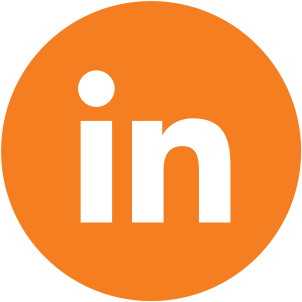One of the most significant KPIs (Key Performance Indicators) about mobile app business analytics is conversion rates. In order to promote a company, measurement and analysis of the strategy are crucial.
When these variables do not exist, it will not be possible, in any way, to know your faults, what processes could be optimized and improved. The more data you have about your customers, the more control you will have and you will know how to increase your profitability.
This metric helps to understand how effective communication has been on a website in order to have clear and well-defined goals. Next, we explain what we mean by this concept, its importance and much more.
What are Conversion Rates?
The term “Conversion Rates” or CR for its acronym in English, which means Conversion Rate, is closely related to digital marketing. It refers to the percentage of users who perform a specific action, from a purchase or registration to a download.
In the case of mobile applications, we could identify, for example, those users who entered the App Store and installed your application. This metric indicates the transformation of those potential customers who have made a purchase.
They are those visitors who perform the action you want, such as purchasing a service, filling out a form, among others. For example, if you have a promotion on your website and after 100 visits, ten people bought the product, what do you think?
The conversion rate in that section is 10%. The higher this rate, the more successful your campaign and website will be.
Conversion rates don’t just indicate a superficial amount of numbers, they show the behavior of real people.
In other words, the idea is not only to raise figures, but also to know your audience’s tastes and interests to enhance your relationship with them. How to achieve it? First we teach you how to calculate this metric.
The Best Formula to Calculate your App Conversion Rate
Now get ready because we will tell you how to calculate the conversion rate of your mobile application.
Your app’s conversion rate shows the relationship between two key factors. The number of users who visited your website and the number of users who converted.
To perform the calculation, we need two elements; pay attention to them.
Actionable Users: This is the total number of visitors who executed a desired action. For example, a purchase, filling out a form, or even clicking a button.
Total Users: The number of visitors who came to your app, either from search results or other sources. Divide the number of goals achieved or the number of conversions by the total visits to your website. The result is multiplied by 100.
Customer engagement and customer loyalty
We can talk about loyalty once users become clients, thanks to the strategies to convert them. The goal is to keep them close, attentive to your products, and interested in your company.
Data Analytics will help you, through metrics that will allow you to know much more about them. Segment your market and develop seductive strategies, such as loyalty bonuses, that encourage them to return.

Analyze how reliable is your app for your customers
This point is crucial, since you must be sure to provide a high-quality product and customer service. Otherwise, your reputation will be in check.
The analysis of your app is carried out to identify possible failures in the process, since it could lead to a low level of downloads.
The verification also works to find out what elements would contribute to abandoning the app, such as a non-intuitive interface or lack of resources. By providing a comprehensive, optimal and error-free product, you will be sending a message to your customers.
How to Define “Conversion” for Your App
We talk about conversion rates, but what is conversion? It is about the behavior of a user with respect to your objectives as a company.
For example, if you want to generate sales and users buy through your website, there is a conversion. We would define conversion as each visitor action, which will be determined by each website.
If a hundred downloads of your mobile application are achieved, we can say that 100 users have converted. The idea is that many users take positive actions so that the conversion rate increases on your website.
KPI’s and Metrics
The KPIs and metrics of mobile applications are key indicators for the success of your advertising campaigns. Here we mention the most significant ones.
- Click Through Rate (CTR)
- Click to Install (CTI)
- App Store Conversion Rate
- Organic / Non-organic division
- Remarketing conversion rate
Why Should You Care About Conversion Rates?
Conversion rates represent the greatest indicator of the effectiveness of your marketing. You can determine if you are sending a suitable audience to the website.
Don’t just focus on sales conversions, but on the elements that lead to conversion. What are these? Adding functionalities to the shopping cart, creating an account, among others.
If you do not worry about optimizing your conversion rate or CRO (Conversion Rate Optimization), you could suffer from certain situations.
Increased competition in the market
Customers can access mobile applications that are more convenient and easier to use than yours.
Design Improvement
By working in a non-functional and complicated flow, customers will feel dissatisfied. A logical and efficient navigation layout delivers information quickly and accurately.
Fast Results
Avoid the slowness that forces users to give up and avoid your application. CRO gives you faster results.
Conclusion
Get involved in understanding and targeting conversion rates, in order to improve the flaws in your strategies. Convertify allows you to convert your website into a mobile app for iOS and Android just by entering your URL.
Evolve and you will see how the results will speak for themselves. Remember that adapting to a digital age dictates new standards of productivity and performance. And this translates into higher profits, less lost time and more effectiveness in your company.






